Early in the spring, before ice cream and slip-’n’-slides were a glimmer in school kids’ summer break dreams, birds were already returning to our coast to begin their courting and mating rituals. From scratching scrapes in the sand to constructing elaborate nests made out of sticks and grass—pelicans, oystercatchers, egrets, and terns didn’t wait long to get busy.
Audubon staff visited Lea-Hutaff Island, Wrightsville Beach, and the rest of our sanctuaries in March to put up postings, totaling over 600 signs in all, ensuring that nesting birds have the space and security they need to begin raising young. From March 1 to September 15, postings protect areas of the beach and coast where birds are building nests, laying eggs, and raising chicks.
Our coastal island and sanctuary program supports thousands of nesting pairs of pelicans, herons, egrets, ibises, gulls, terns, and black skimmers among others. All told, this represents 40 percent of the state’s coastal nesting waterbirds.
Along with our regular monitoring and banding efforts, this year we received a grant from North Carolina SeaGrant to work in partnership with the Cornell Lab of Ornithology to start collecting poop samples from Royal and Sandwich Terns, Black Skimmers, American Oystercatchers, and Brown Pelicans to see what they’re eating and how much. Instead of visually identifying bits of prey items, the fecal samples will be analyzed using a technique called DNA metabarcoding, in which the DNA in the poop is amplified and matched to a species or other higher taxa.
“Aside from being extremely fun to collect, poop samples will give us a brand-new picture of the number and diversity of species in their diet,” Coastal Biologist Lindsay Addison said. “It’ll help us answer the question, what and how much are they eating? This can help inform our management of key species, especially for species that rely on prey that may be affected by warming oceans or other effects of climate change. We’re very excited to have received the funding and to be able to work with the Lab.”
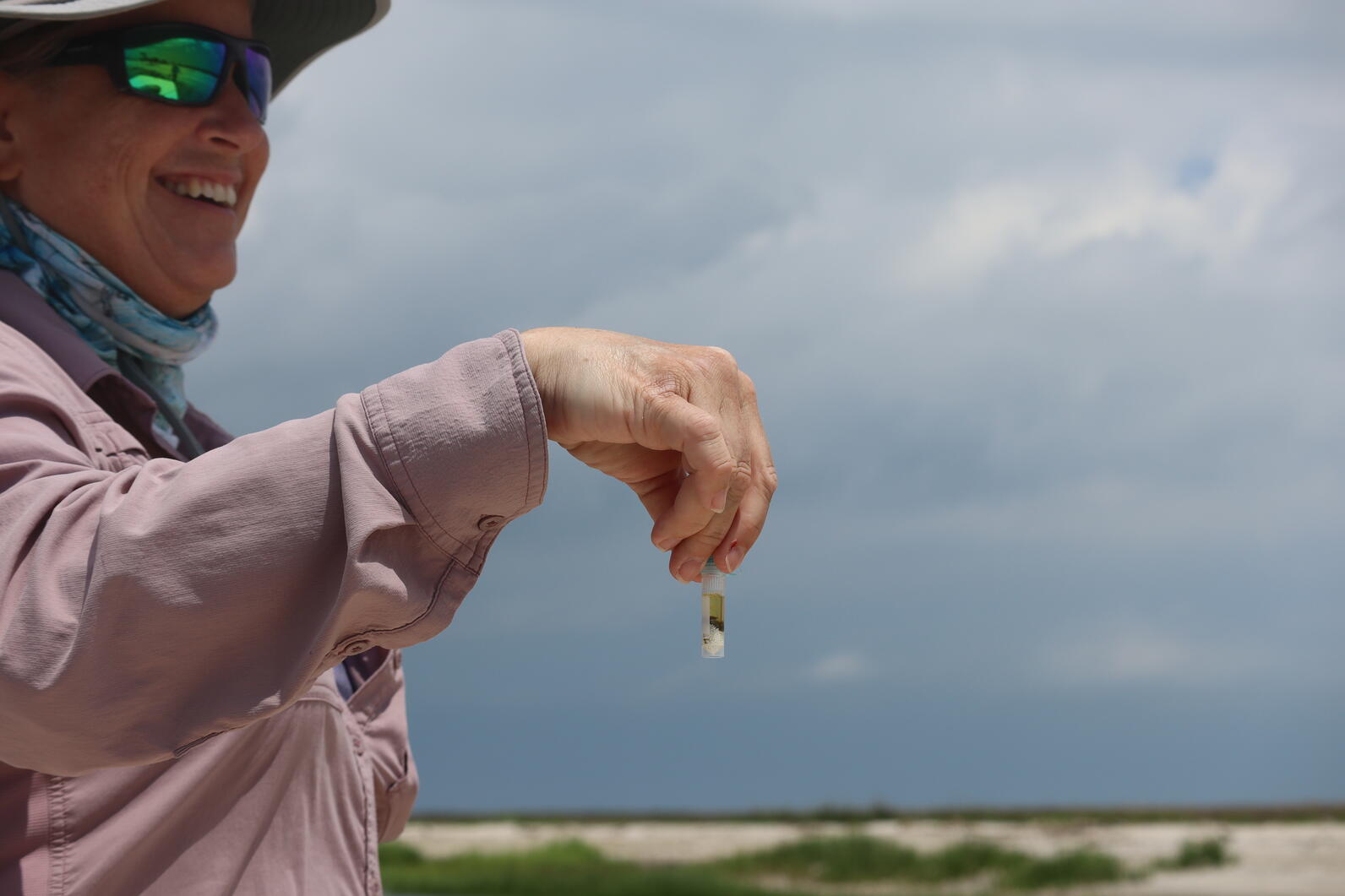
Read on to learn more about our sanctuaries and the birds that call them home.
The Cape Fear River
The Cape Fear River is home to a quarter of the state's nesting American Oystercatcher pairs, about 100 pairs in total. Of those, we closely monitor 52 pairs on several focal islands to determine nest fate, find out if these pairs are successful at fledging chicks, and try to detect cause of failure if not. We visit the other pairs less often, but try to keep tabs on them as well.
This information then informs the management actions we take to ensure more successful nesting attempts in the future. This can include anything from doing predator management, removing encroaching vegetation, providing shelters for baby oystercatchers, and much more.
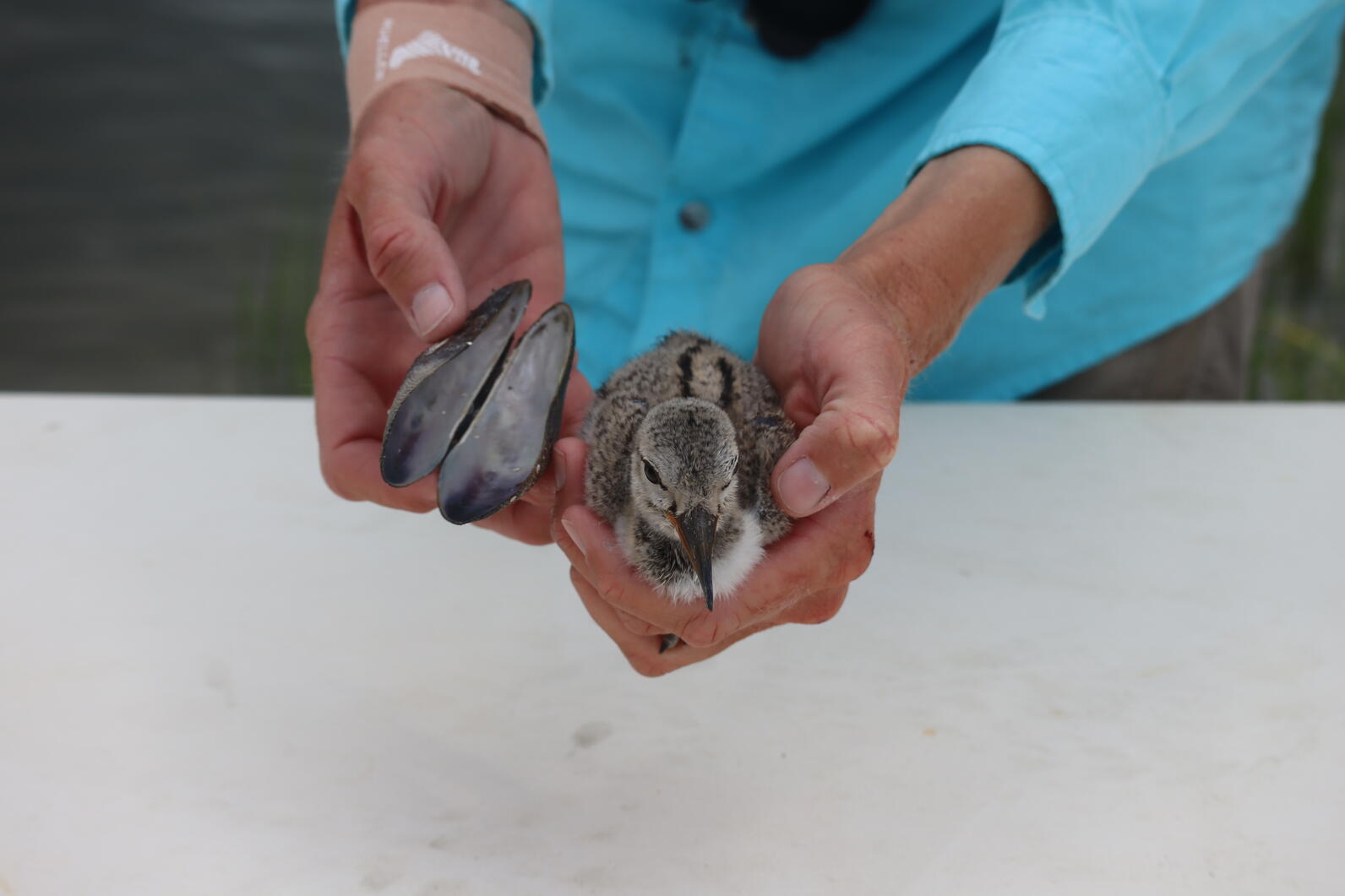
Our coastal team will also keep an eye out for newly hatched oystercatcher chicks so they can be banded and monitored throughout their life.
“A tell-tale sign of a nearby chick are open mussel shells,” Addison said. “Normally an oystercatcher parent will forage and feed away from the nest, opening oysters, clams, and mussels as they find them. But when they have a chick to feed, they’ll often bring whole mussels back to the nest to open freshly for their growing chicks.”
South Pelican Island continues to be a stronghold for Royal and Sandwich Terns, and usually hosts 3,000-5,000 pairs annually. South Pelican is a dredged-material island, meaning it is made of sand dug out of the Cape Fear River. These islands are great for beach-nesting birds, as they provide a big area of open bare sand for terns to lay their eggs. Because they aren't close to people during the nesting season, the birds don't have to contend with disturbance from people and dogs.
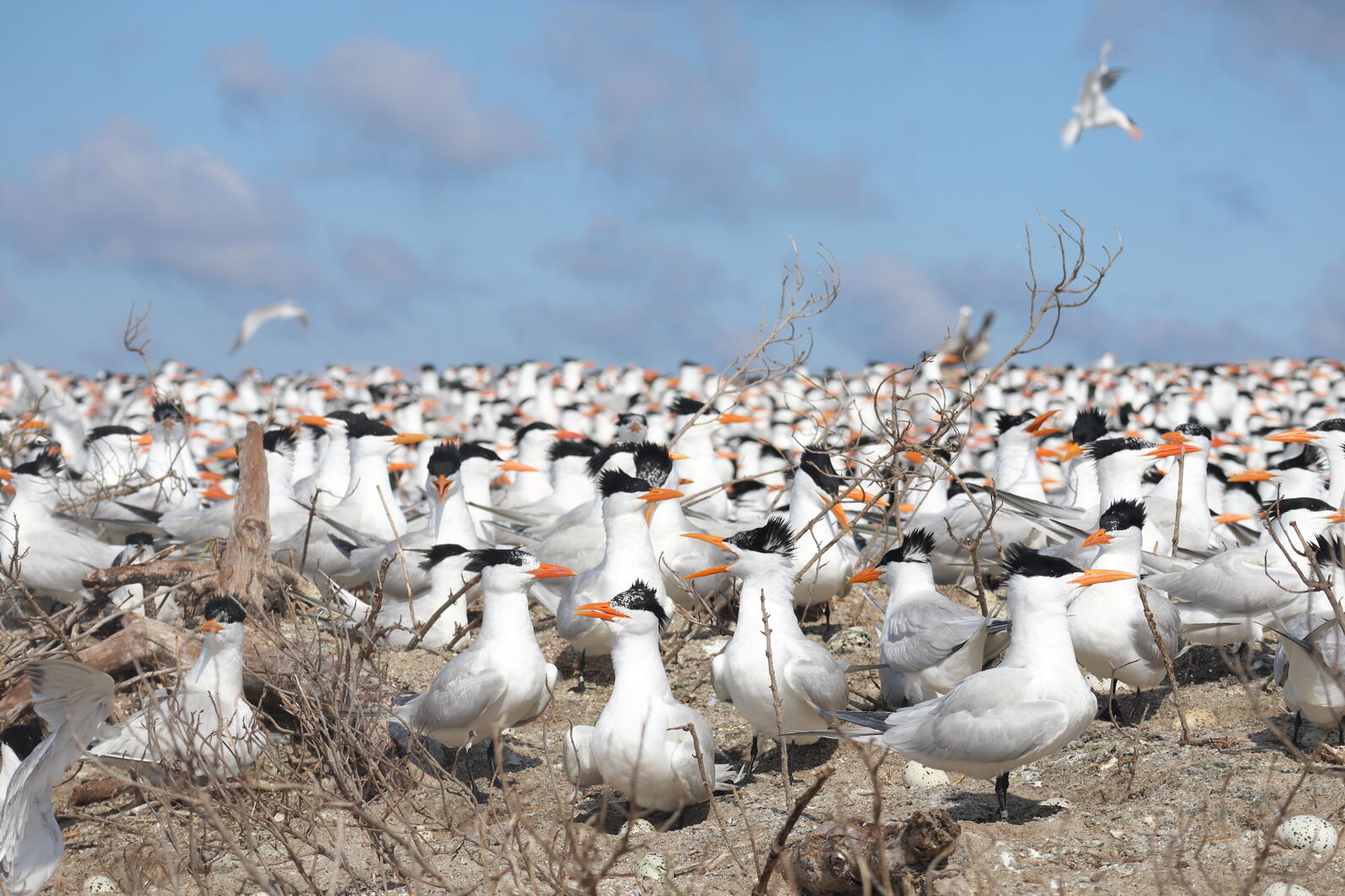
Also on the island are 11 American Oystercatcher pairs, Brown Pelicans, and over 2,000 pairs of Laughing Gulls which tend to bully the terns and munch on their eggs—much to our coastal team’s dismay. Fortunately, reducing the amount of vegetation on the island keeps the gulls and terns mostly separate from each other—one desired outcome of management.
A new project we kicked off this year will help us understand where Royal Terns are foraging and what areas of the coast they rely on the most during breeding and migration. Thanks to years of banding Royal Terns, this project will give us even more knowledge of this important species.
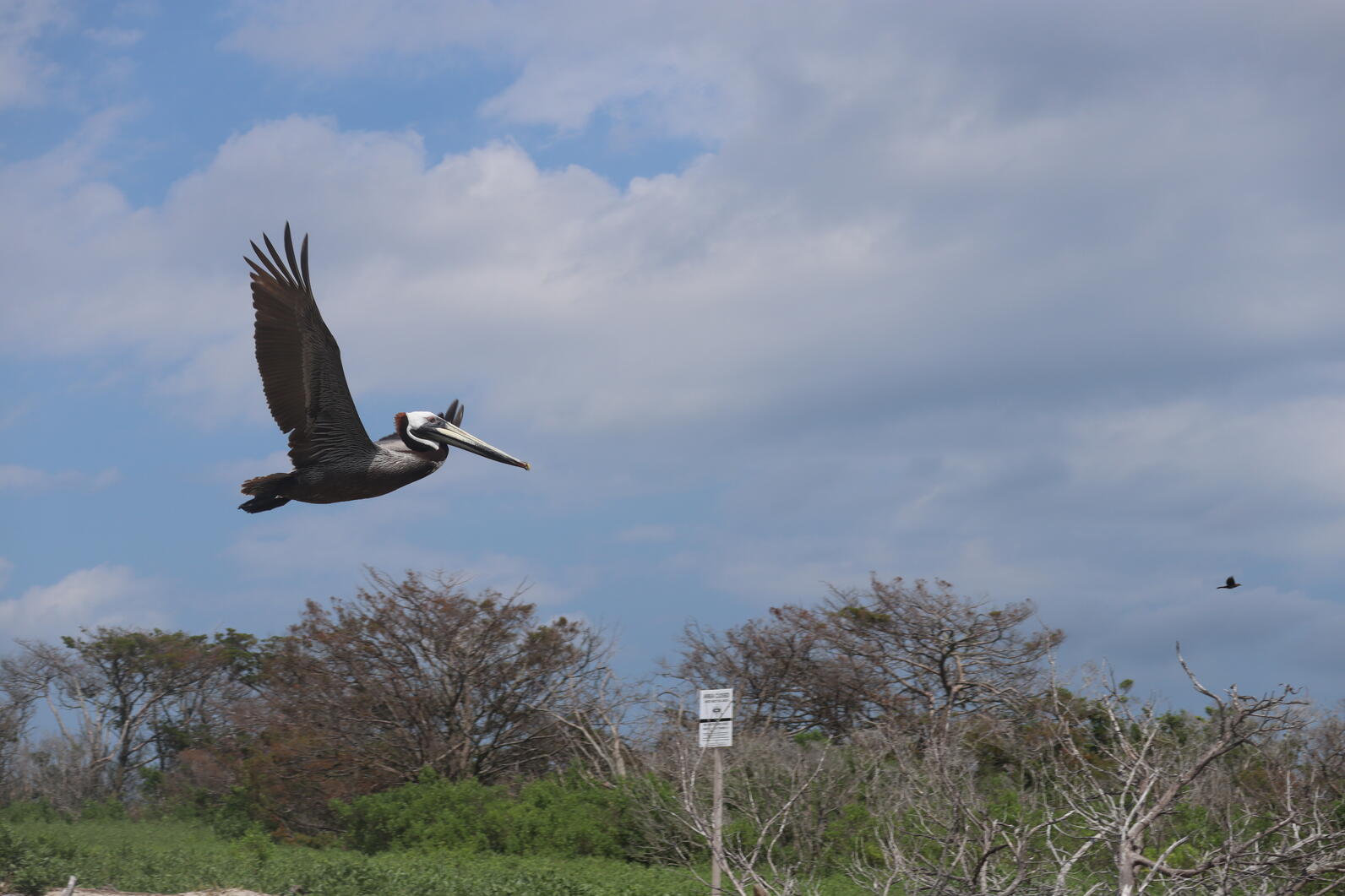
On Ferry Slip Island there are 17 American Oystercatcher pairs along with a few hundred Laughing Gulls and a handful of Willets and Black Skimmers. This is another dredged-material island. It was restored a few years ago, through an ongoing partnership with the U.S. Army Corps of Engineers.
If you love pelicans, egrets, ibis, herons, and oystercatchers then look no further than Battery Island, which hosts thousands of tree- and shrub-nesting birds. Pelicans, egrets, and ibis especially like to build nests in trees and low shrubs, features characteristic of Battery Island. Anywhere you look on the island there will be dense pockets of birds, all busy incubating or raising chicks.
Although it’s only June and summer vacation has only just begun for people, some of the Cape Fear River birds are already fledging chicks. So far, many Great Egrets have taken their first flights from North Pelican and Battery Islands, while 8 American Oystercatchers have fledged.
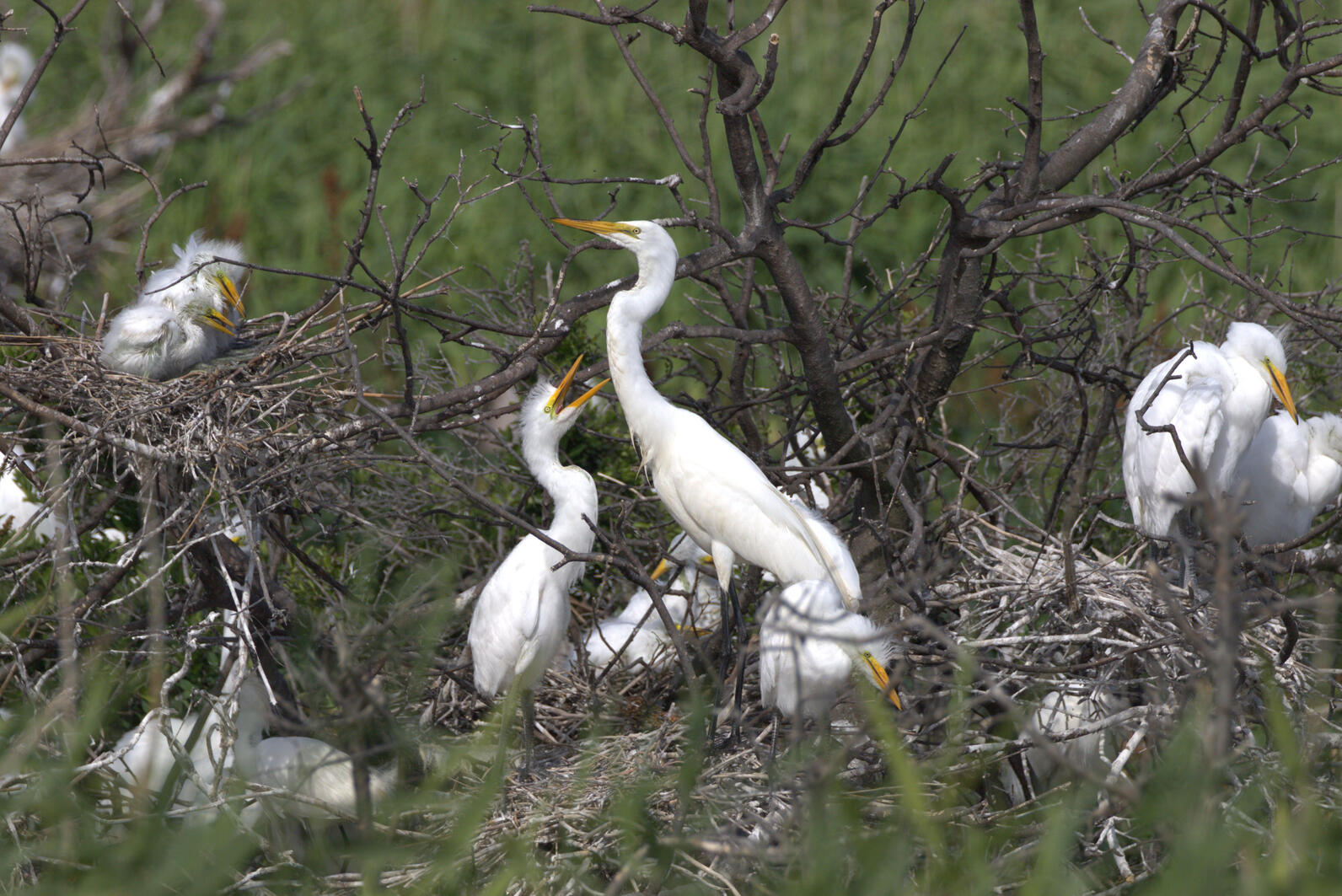
Lea-Hutaff Island
A local favorite for birds as well as boaters, Lea-Hutaff Island is home to 922 pairs of Least Terns who also nest on open, bare sand. These terns are doing exceptionally well on our coast with 2,979 nests and 67 sites counted across the state in 2023. As in most years, Lea-Hutaff is supporting a large proportion of the state's population.
Lea-Hutaff also hosts pairs of Willets, Wilson’s Plovers, Common Nighthawks, and 25 pairs of American Oystercatchers. We also have a pair of Piping Plovers nesting on the island again this year. The pair incubated three eggs of which one chick is still alive and getting close to fledging. If it succeeds, it will be the first successful Piping Plover chick on the island in over a decade.
Sea turtle season has also started on the island. So far, four nests have been laid, all by loggerhead sea turtles. Our coastal team monitors the island almost daily to detect turtle crawls, maintain the bird postings, and make sure that the wildlife using the site has every possible chance to be successful.
The South end of Wrightsville Beach
A place for birds and people alike, the south end of Wrightsville Beach is our busiest nesting site. Visited daily by our volunteer Beach Bird Stewards, this sanctuary hosts colonies of Least Terns and Black Skimmers. Skimmers have been nesting on the beach since 2009 and in most years, they prove to be quite successful.
Last year a storm that struck around Memorial Day disrupted nests, requiring many to start over. Black Skimmers are notoriously late nesters, however, so they were able to raise chicks anyway. Unfortunately this year, a beach renourishment project removed much of their habitat, and the colony is smaller, but the first chicks hatched in mid-June with more hopefully to come.
Want to see these birds for yourself? Audubon hosts free guided bird walks every Monday morning at 9 am through August 15.
Beacon Island
Last but not least, is Beacon Island our sanctuary in the Pamlico Sound near Ocracoke. This marshy island, covered in grass and mud, is home to a colony of about 150 Brown Pelicans. These pelicans are part of our project to study the impacts of PFAS on Cape Fear pelicans. As our control group, these pelicans can be compared to those on the river to see what negative health impacts might be associated with PFAS exposure. We’ll be continuing to gather data for the study this summer so stay tuned!
*All banding, marking, and sampling is being conducted under a federally authorized Bird Banding Permit issued by the U.S. Geological Survey’s Bird Banding Lab.











